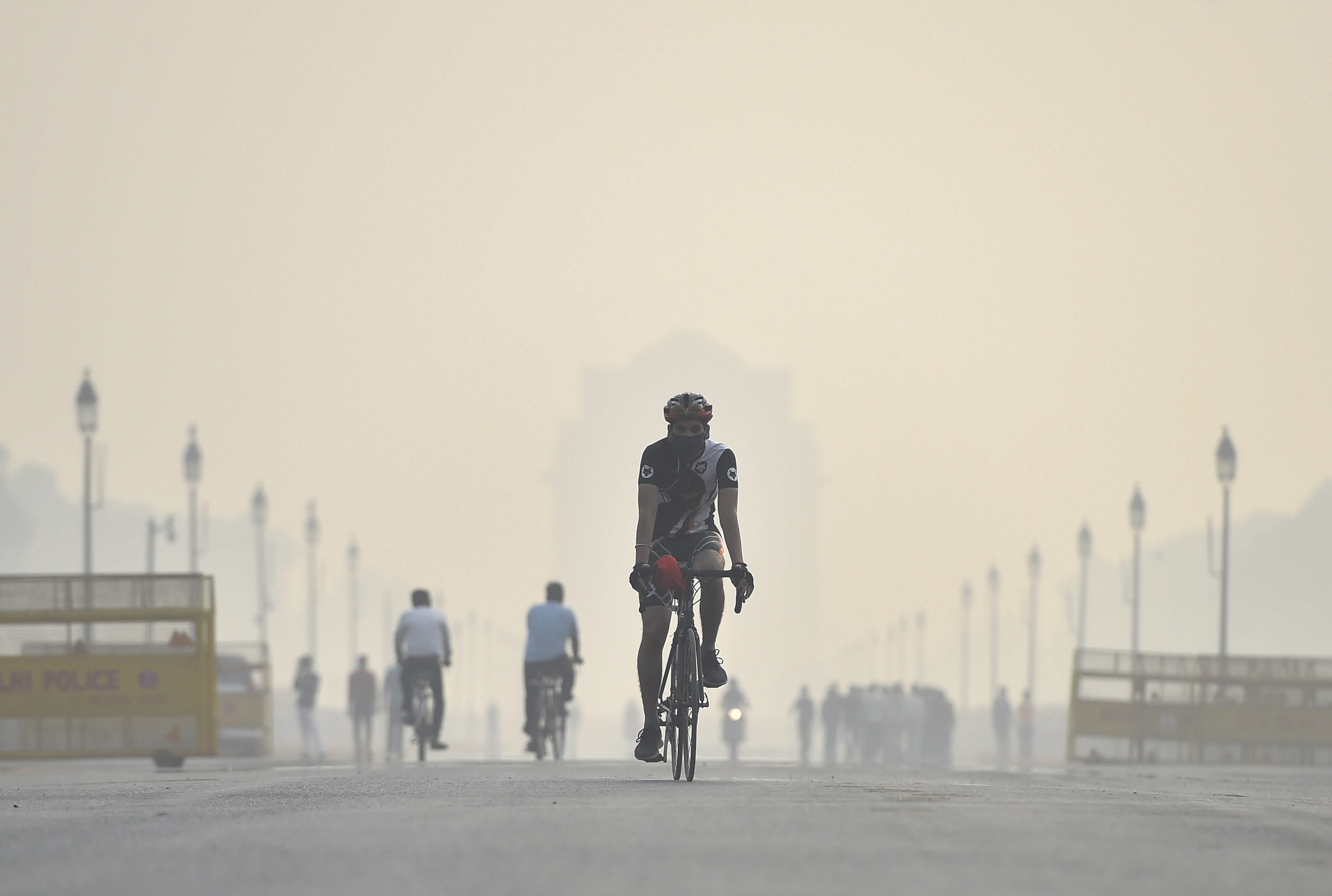Delhi's air quality dipped to 'severe' levels from “very poor” on Saturday night because of unfavourable weather conditions and a significant increase in stubble burning that was recorded last Thursday, the central pollution watchdog and Met officials said.
The data of the Central Pollution Control Board showed that the overall air quality index (AQI) was at 423. An AQI between 0 and 50 is categorised as good air quality, 51 and 100 satisfactory, 101 and 200 as moderate, 201 and 300 poor, 301 and 400 very poor, and 401 and 500 as severe.
On Saturday morning, the city's air quality was in the 'very poor' range, but it slipped down to severe levels by evening. Severe air quality reading were recorded in 28 neighbourhoods. In seven others, the air was 'very poor', the pollution control board said.
The Environment Pollution Control Authority has asked the departments concerned to extend the ban on construction activity, as well as work of industries using coal and biomass and entry of trucks till November 12.
According to the Indian Institute of Tropical Meteorology, the increase in PM2.5 concentration over Delhi is because of unfavourable meteorological conditions that are trapping pollutants, as well as a significant increase in stubble burning in states neighbouring Delhi. Stubble burning in neighbouring states on Thursday was the 'largest-ever recorded' this year, the IITM had said on Friday, adding that it could lead to a further deterioration in air quality. The institute said about 2,100 fires were seen on Thursday over north western India.
While authorities in Delhi worked on steps to improve air quality, in Muzaffarnagar in neighbouring Uttar Pradesh, farmers led by local Rashtriya Lok Dal leader Rajan Chawla reportedly burnt sugarcane crops on Sunday to protest against the Uttar Pradesh government's 'inability' to declare a minimum support price.











